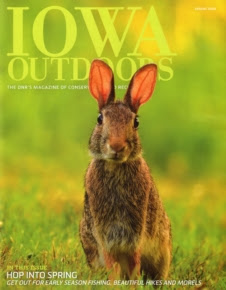 |
Mount Mercy Magazine, 2018 edition.
|
Books are the oldest print medium; newspapers are the algae of the news ocean. Books are still with us but have an uncertain future—newspapers are clearly in decline in print, but attempting to morph into new kinds of news organizations.
What are magazines? Almost as old as books, clearly important in the news universe but not as vital as newspapers, magazines are very diverse—they come in many different forms.
According to a magazine trade association report, there are more than 7,300 magazines in the United States today, a multi-billion-dollar industry employing tens or hundreds of thousands (depending on how you count—many media professionals have roles in magazines but don’t work in the industry full-time).
 |
2019 Magazine economic impact--most recent numbers I found online.
|
 |
Various ways magazines count audience.
|
General circulation magazines that depend on a mix of ads and subscription for economic viability—like all traditional print media roughly following the penny press economic model of a cheap publication that presents ads to survive—have taken a hit in recent years. “Newsweek” ceased print publication recently during ownership changes, for example.
But not all magazines follow that model. And the number of magazines has actually remained steady while newspapers have been in decline, and magazine readership has grown, although those numbers can be a bit fuzzy because magazine publishers like to include web editions along with print editions.
According to www.agilitypr.com a Public Relations reference site, in January 2021 top 10 circulation magazines in the United States are:
- AARP Magazine.
- AARP Bulleting.
- Costco Connection.
- Betters Homes and Gardens*.
- Game Informer Magazine.
- Good Housekeeping*.
- People Magazine.
- Woman’s Day.
- National Geographic.
- Time.
*These are published in Des Moines, Iowa, by Meredith, Corporation.
Today, some magazines still retain national prominence. Investigative reporting in the “New Yorker” and “Atlantic” magazines often sparks stories that become major news across the media. Yet one reason the magazine industry has been so resilient is that it exists in some many forms in so many places.
Here is a partial list of the kinds of magazines that there are:
- Trade and organization magazines. The top two magazines by circulation number in the United States are both published by the American Association of Retired People—AARP. Many prominent national organizations sponsor magazines as part of their member or audience outreach programs.
- Corporate sponsored. Some magazines are meant to market goods or services or create a sense of community. Costco, for example, published a magazine. If a corporation is large enough—if it has tens of thousands of employees in diverse locations—a magazine publishes specifically for its own employees might exist. Many organizations, including most colleges, publish at least one magazine to stay in touch with parents, potential donors and alumni. Large universities publish multiple such magazines.
 |
2007 corporate magazine published in Cedar Rapids.
|
 |
Special kind of "corporate" magazine--local government PR magazine in Cedar Rapids.
|
- General circulation. These may be news magazines like “Time.” Or they can be more oriented to an audience, sort of like cable TV. “Elle” and “Cosmopolitan,” for example, target young women. “Sports Illustrated” is for sports fans, primarily males. “Better Homes and Gardens” pretty clearly targets women of financial means in settled households. This category is the one most impacted by media changes—but even here, still includes large and important publications.
 |
"Time" person of the year in 2017 (above) and 2020 (below). It's a sometimes controversial choice--conservatives were angry when Biden and Harris were named--but "Time" is not "honoring" a person. In 1938, person of the year was Adolph Hitler, and "Time" was not endorsing fascism. The news magazine picks what it considers the most newsworthy personality of the year (not always one person). The cover is not a prize.
|

- Niche publications. The Iowa DNR publishes “Iowa Outdoors,” unusual because it’s a government magazine that is subscription based. The internet tends to divide audiences up by specific interest—an idea that is not novel to cyberspace, because it has been a magazine strategy for generations. Many large cities have specific city magazines. Almost any hobby or profession will have one or several magazines associated with it. Magazines are often creative incubators—new fiction writers may see their first stories published in this medium before they complete their first novel. Poetry and prose literary magazines, even including “Paha” at Mount Mercy University, provide an important creative outlet for writers as well as the pleasure of discovering new voices for readers.
 |
Published by Iowa DNR, but subscription based.
|
- Scholarly journals. The best of these are “peer reviewed,” that is, research articles are only published if a panel of experts in that particular field agrees that the research described in the article is worthwhile. Many of these journals are also web sites, and quick sharing of information on COVID-19 via both government sites and science journal sites has been a key collaborative tool that helps explain, for example, why vaccines that usually take a decade or more to develop are starting to be available just one year into this pandemic. Any “hard” science or social science will have a whole series of journals that researchers publish in—and it’s those publications that serve as major news sources of new research, as well as accolades such as the Nobel Prize in physics or chemistry. The cover of Science, by the way, is from December 2009—the cover article is on groundbreaking gene research done at Iowa State University, and one of the authors of that article was Dr. Matthew Moscou. Being on the cover of science is unarguably a highlight of his career—although he also has the distinction of being Joe Sheller’s son-in-law. Coincidence? Yes, yes it is.
 |
Cover of Science, a scholarly journal, reporting on gene editing technology studied at Iowa State.
|
Anyway, because magazines exist in such diverse forms, they have a more diffuse cultural impact. One impact that has been of concern in recent years is the unhealthy body image our culture puts forth as the ideas for young women—impossibly thin super models whose bodies are transformed using Photoshop appear in images in magazines that target females, particularly teens.
It’s too complex of an issue to blame on magazines, that both are promoting an unhealthy body image but are also following the preferences of their audience.
Magazines are among the most difficult to classify of media—and that is their strength. They don’t follow one model, but many. And many of them are closely associated with, or responsible form, online sites that draw traffic.
Final point: The magazine industry has many publications headquartered in New York, the publishing capital of the United States, but this diverse industry features important publishers in other places, too. “Better Homes are Garden” and some other very large, nationally important magazines are published by a huge company called Meredith—located in Des Moines, Iowa.
 |
One of the U.S.A.'s largest magazine, published in Des Moines, Iowa.
|










No comments:
Post a Comment